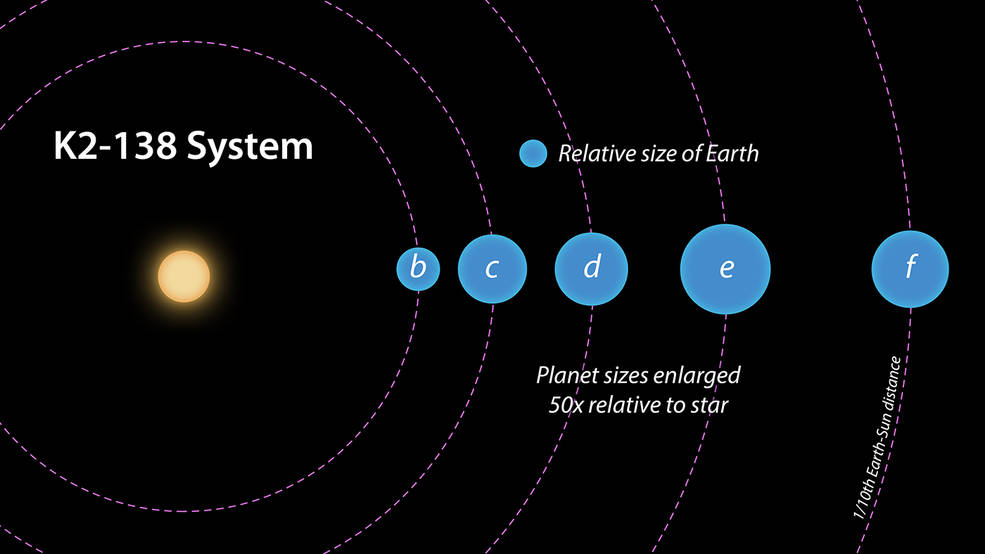Five new alien super-Earth exoplanets found 620 light years away by citizen scientists in a first
Scientists suspect that the newly-discovered planetary system may likely contain a sixth exoplanet.



For the first time ever, citizen scientists have successfully discovered a new planetary system, located outside our solar system, around 620 light years away within the Aquarius constellation. The planetary system is believed to be made up of five alien planets, all of which are considered to be super-Earths. Exoplanets that have been classified as super-Earths are two-three times larger in size than Earth.
Dubbed K2-138, the planetary system was discovered using data from Nasa's Kepler space telescope and may even contain a sixth planet. All five exoplanets are believed to be extremely hot, given how each of the alien planets orbits a sun-like star in a really close orbit that is mostly completed in just 13 days.
Unlike our own solar system, which has planets orbiting the sun in an elliptical orbit, the exoplanets in K2-138 were found orbiting their sun-like star in concentric circles. The planets were also found orbiting in an interesting mathematical configuration called "resonance" in which, each planet takes 50 percent longer to complete its orbit than the planet further in.
The exoplanets' orbital behaviour suggests that all five of the alien planets may have originally formed together in a smooth, rotating disc and taken eons to migrate closer to their star.
"The clockwork-like orbital architecture of this planetary system is keenly reminiscent of the Galilean satellites of Jupiter," says Konstantin Batygin, assistant professor of planetary science and Van Nuys Page Scholar, who was not involved with the study, said in a statement. "Orbital commensurabilities among planets are fundamentally fragile, so the present-day configuration of the K2-138 planets clearly points to a rather gentle and laminar formation environment of these distant worlds."
According to Nasa, the central sun in K2-138 is slightly smaller and cooler than our Sun. While one of the five planets (the one located closest to its star) is considered to be rocky, the other four exoplanets likely contain "large amounts of ice and gas".
The credit for the discovery of the alien planetary system goes to the over 1,000 citizen scientists across the globe, who worked on a project called Exoplanet Explorers. Using a platform called Zooniverse, citizen scientists sifted through Kepler's data.
"We put all this data online and said to the public, 'Help us find some planets,'" Ian Crossfield, assistant professor of physics at MIT, who along with fellow astronomer Jesse Christiansen at Caltech worked to make Kepler data public, said in a statement. "It's exciting, because we're getting the public excited about science, and it's really leveraging the power of the human cloud. It turns out the world is big enough that there's a lot of people who are interested in doing some amateur science. And the human eye in many cases is very effective in separating the planetary wheat from the nonplanetary chaff."
According to Nasa, a new batch of 2017 Kepler data was recently uploaded to the Exoplanets Explorers. Citizen scientists and astronomers are currently searching through the new data trove, indicating that more new exciting discoveries may be in the offing.
The new study titled "The K2-138 system: A Near-Resonant Chain of Five Sub-Neptune Planets Discovered by Citizen Scientists," has been published in The Astronomical Journal.






















